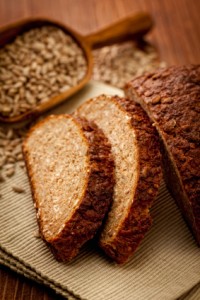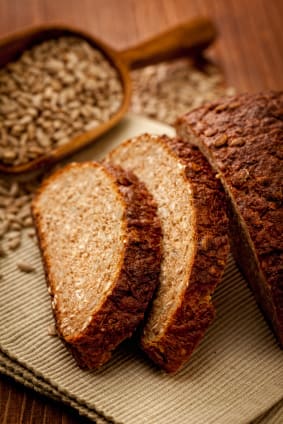Why in the world would someone take whole wheat grain, crack the grain, pulverize it with rollers, and separate the endosperm from the dark, fibrous bran and the wheat embryo? Why would they take out important nutrients, vitamins, unsaturated fats, fiber and magnesium? And if intact grains are so healthy, why did we stop eating them and shift to highly refined grains – especially when study after study has shown the ill effects of white, refined grains on our health?

Once upon a time, white flour was a luxury food. It was a novelty for the upper classes. Enter rollers in the early 19th century, and everything (grain) changed. It made white flour affordable to the masses, and white flour’s popularity exploded. No longer did the poor need to suffer whole wheat, rye or barley flour. They could have the food of the rich, the “purified” grain that made breads and cakes lighter, airier and fluffier.
Buying white flour became a status symbol. It could also survive longer without refrigeration, as all processed foods can. But what’s good for business and sales isn’t necessarily what’s good for our health. Here’s the damage we incurred when the erroneously titled “Wonder Bread” became a staple of the American diet.
- Whole grains protect against diabetes. According to two large ongoing studies, people who consume whole grains are 30% less likely to develop diabetes. Because whole grains take longer to digest, you don’t get repeated insulin spikes, which lead to Type II diabetes.
- Intact grains mean less heart disease. Also according to a large study, women who consume more whole grains were 30% less likely to develop heart disease than those who consumed refined grains.
- Less refined grains means better GI health. The fiber in whole grains helps keep the stool soft and bulky. This prevents constipation, which is the number one gastrointestinal complaint in the United States. Annually, 725 million dollars are spent on over-the-counter laxatives. Whole grains also help to prevent diverticulitis and diverticulosis.
- Whole grains may prevent cancer. A recent overview of 40 control studies indicated that whole-grain consumption reduced the chances of developing mouth, stomach, colon, gallbladder and ovarian cancer.
- An even more recent study found a troubling link between high consumption of white rice and Type II diabetes, a disease that in some countries is becoming an epidemic. “What we’ve found is that white rice is likely to increase the risk of Type II diabetes, especially at high consumption levels such as in Asian populations,” according to Qi Sun of the Harvard School of Public Health.
- In the British Medical Journal (BMJ), Sun’s team said the link emerged from an analysis of four previously published studies carried out in China, Japan, Australia and the United States. These studies followed 350,000 people over a timescale from four to 22 years. More than 13,000 people developed Type II diabetes. In the studies carried out in China and Japan, those who ate the most rice were 55 percent likelier to develop the disease than those who ate the least. In the United States and Australia, where consumption of rice is far lower, the difference was 12 percent..
Whereas at one time, you could only find whole wheat, whole rye, brown rice and whole grain pasta in health food stores, now they are available just about everywhere. But be sure the products you are buying are truly whole-grain. Often, breads are brown in color, but are made with white processed flour. Check the ingredients carefully to be sure.
If the taste of a whole-grain food like pasta or brown rice isn’t palatable to you, begin by mixing it with the white refined version and slowly increasing the ratio of intact grains to refined grains. Speak to people who have made the switch. Once they reacquire their taste-buds and adjust to whole grain products, they find it difficult to return to the white flour products.
Remember – the more any food is processed, the more nutrients, minerals and vitamins are lost. According to the USDA, only 1% of ingested food in the United States is unrefined as opposed to 20% of refined grains. The more this ratio shifts in favor of whole grains, the less disease there will be.
Alan Freishtat is an A.C.E. Certified Personal Trainer and a Lifestyle Fitness Coach with over 16 years of professional experience. He is the co-director of the Jerusalem-based weight-loss and stress-reduction center Lose It! He can be reached at 02-651-8502, 050-555-7175, on his USA Line 1-516-568-5027, or by email at alan@loseit.co.il.
The words of this author reflect his/her own opinions and do not necessarily represent the official position of the Orthodox Union.
